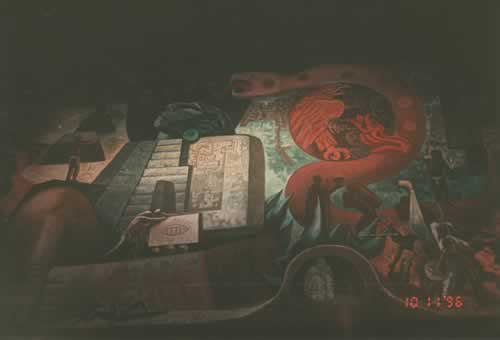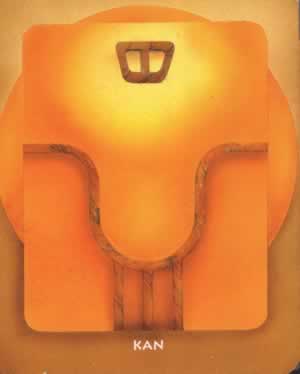
Serpent heads as we know, were
totems of the Cans. The tongue protruding from the mouth was the symbol of wisdom
among the MAYAS. it is also found thus in portraits of priests, kings, and other
exalted personages supposed to be endowed with great wisdom. It may also have
been a token of respect, as it is even today in Thibet.

Kan in Maya is both the Number
Four and Serpent.
Can also forms part of Canzah,
meaning teacher and Canbah, meaning student.Additionally, it is used when referring
to the initiates "Luk'Uben Tunben Can" meaning 'Those absorbed by
the knowledge".
Can "Four" and "Serpent"
alludes to the highest esoteric knowledge of our Mayan Ancestors.
The Egyptian hierogrammists
represented their country as a SERPENT with inflated breast, standing on a figure
8, under which is a sieve, called MAYAB, in maya. They likewise symbolised Egypt
as a Persea Tree (ibid, p.200), sacred to the Goddess Athor, whose fruit in
the sculptures resembles a human heart (Ibid, p.119), which vividly recalls
the one of the Mayas that bear the Alligator pear - the Laurus persea of Linnaeus,
so abundant in tropical America.
Kan is but a variation of CAAN
"heaven", "that which is above", Caanal, and also of CAN
"Serpent", which was the emblem of the Maya Empire.
But "Can" is also
the numerical four, the Tretraktis, that most solemn and binding oath of the
initiates into the mysteries. According to Pythagoras, who had learned from
the Egyptians the meaning of numbers, "Can" represents the mystic
name of the creative Power. "Can", again is a copulative particle,
that united to verbs, indicates that the action is verified frequently with
violence. Hence the name Kancab for yellow or red clay, the dry land, upheaved
from the bottom of the deep by Volcanic fires, anthropomorphized in Homer.
HOME


